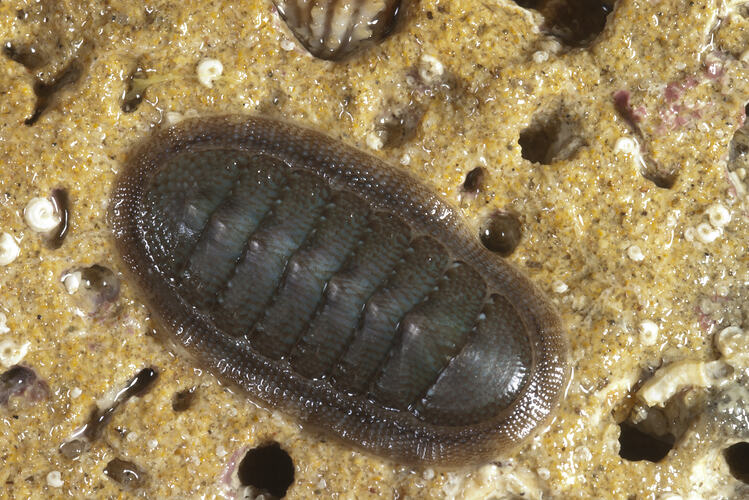General Description
Flattened oval-shaped body with 8 shell sections (valves) surrounded by a fleshy girdle. Usually dark green or green-blue. Up to 8 cm long.
Biology
This large chiton is one of the most common chitons in southern Australia and is often seen on rocks. It has an unusual escape mechanism; if the rock it is on is removed from water, it curls up and drops back into the water, something that no other chiton is known to do. They are sometimes fished recreationally.
Distribution
South-eastern Australia.
Habitat
Under rocks on most rock platforms, below mid tide level to depth of 12 m.
More Information
-
Animal Type
-
Animal SubType
-
Brief Id
Green-blue, anterior valve with 20-30 radiating ridges, central valves with longitudinal ridges, girdle with pebble-like scales.
-
Maximum Size
8 cm
-
Habitats
-
Diet
Herbivore
-
Endemicity
-
Commercial
No
-
Conservation Statuses
CITES: Not listed, FFG Threatened List: Not listed, DSE Advisory List: Not listed, IUCN Red List: Not listed
-
Depths
Shore (0-1 m), Shallow (1-30 m)
-
Water Column Locations
On or near seafloor
-
Taxon Name
-
Scientific Author
(Sowerby, 1840)
-
Common Name
Chiton
-
Phylum
-
Class
-
Order
-
Suborder
-
Family
-
Subfamily
-
Genus
-
Subgenus
-
Species Name
australis



